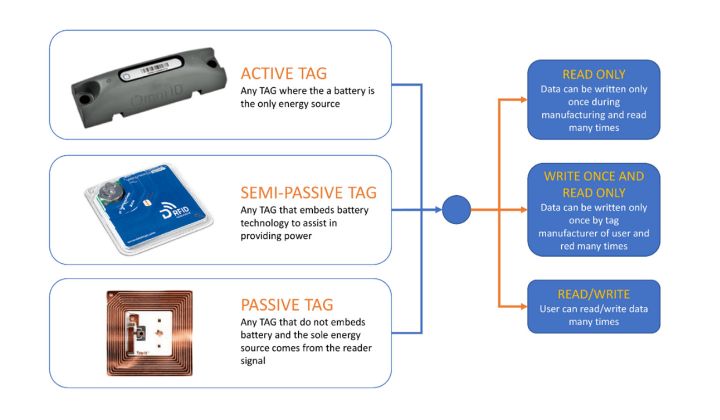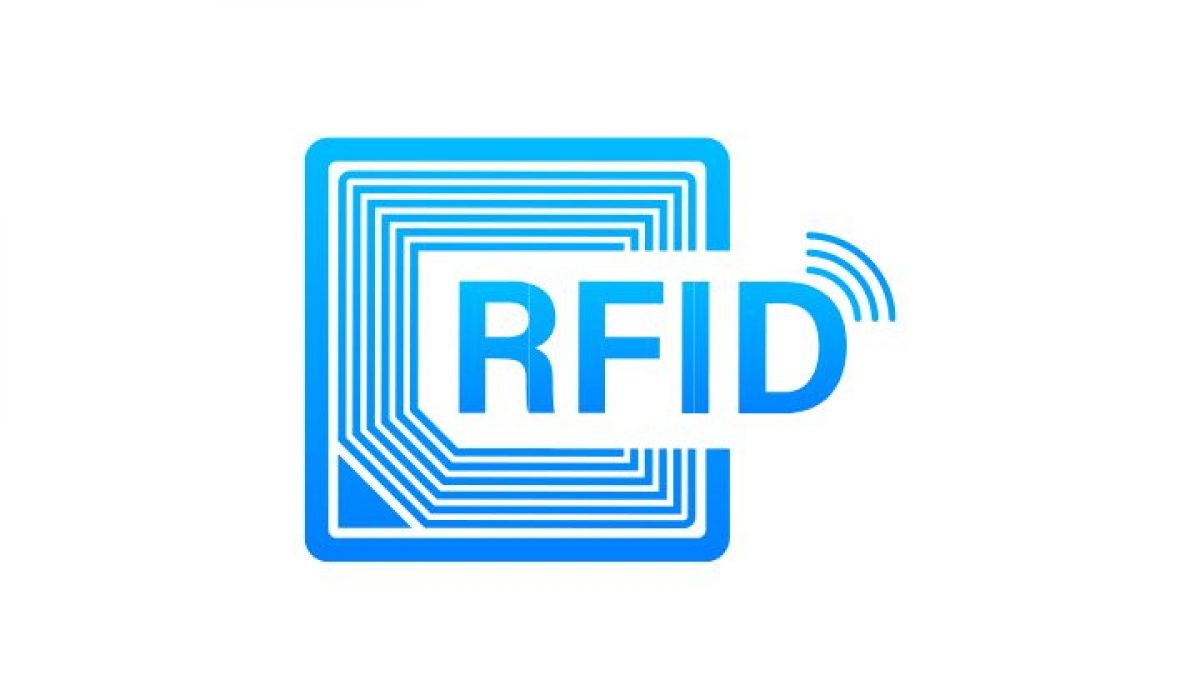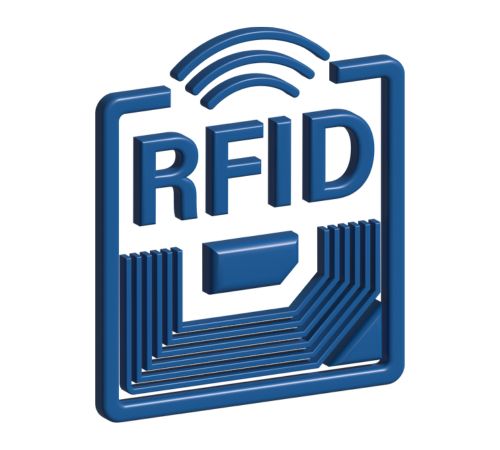Radio-Frequency Identification (RFID) technology, pivotal in modern inventory management, comes with varied costs. On average, RFID tags can range anywhere from $0.10 to over $20 each, depending on various factors. This range underscores the importance of understanding RFID tag cost for businesses looking to implement this technology efficiently.
In this article, you will learn:
- The key factors that influence the cost of RFID tags.
- A comparative analysis of costs for different types of RFID tags.
- Practical tips for selecting a cost-effective RFID tag tailored to your specific needs.
Join us as we delve into the world of RFID tags, providing insights into what drives their cost and how to make informed choices.
What is an RFID Tag?
RFID, standing for Radio-Frequency Identification, refers to a technology used for storing and remotely retrieving data. RFID tags are small electronic devices embedded with a chip and antenna, designed to receive and respond to radio-frequency queries from an RFID transceiver.
There are primarily three types of RFID tags:
Passive RFID Tags



These do not have a power source and are activated by the radio frequency energy transmitted from RFID readers. They are the most economical option, often used in supply chain management, asset tracking, and access control.
Active RFID Tags

Equipped with their own power source, usually a battery, active tags can transmit signals autonomously. They are more expensive but offer a longer read range and are ideal for tracking high-value goods over larger distances.
Semi-Passive RFID Tags
A hybrid of the two, these tags use a battery to power the tag’s electronics while relying on the reader for signal transmission. They offer a balance in terms of cost and performance.
Understanding these types is crucial for grasping the cost dynamics of RFID systems, as each type serves different purposes and, consequently, comes with varying price tags.
Factors Influencing RFID Tag Cost

The cost of RFID tags isn’t uniform; it varies based on several key factors:
Material and Design
The construction materials (plastic, paper, metal, etc.) and the physical design (size, shape, robustness) of the tag are major determinants of cost. For instance, tags designed for harsh industrial environments or specialized medical applications need to withstand extreme conditions, thus requiring more expensive materials and protective features.
Approximate cost range:
- Basic designs – $0.20 to $2;
- Advanced, durable designs – $3 to $15 per tag.
Type of RFID Technology
The frequency band (LF, HF, UHF) plays a key role in cost determination. LF and HF tags, typically used for short-range applications like access control, are cheaper. UHF tags, offering extended read ranges suitable for logistics and inventory tracking, are more costly due to their advanced capabilities.
Approximate cost range:
- LF and HF tags – $0.10 to $5;
- UHF tags – $0.20 to $20.
Volume of Purchase
The quantity of tags ordered impacts the cost significantly. Larger orders typically allow for economies of scale, reducing the per-unit price. This is particularly relevant for businesses implementing widespread RFID systems across multiple locations.
Approximate cost range:
The per-unit cost can decrease by 5% to 20% for bulk orders, depending on the supplier and order size.
Customization Requirements
Custom features like unique shapes, sizes, enhanced frequencies, additional memory, or integrated sensors for specific applications can increase costs. For example, RFID tags customized for unique security applications or integrated with temperature sensors for cold chain logistics are more expensive.
Approximate cost range:
$0.50 – $25 per tag, varying with the complexity of customization.
Memory Capacity
Tags with larger memory capacities, necessary for storing extensive data, are priced higher. This is particularly relevant in applications requiring detailed tracking information or in industries with complex inventory systems.
Approximate cost range:
- Simple tags with minimal memory – $0.15 to $3;
- High-memory tags – $3 to $10.
Read Range and Sensitivity
The operational range and sensitivity of the tag are crucial for certain applications. Tags with longer read ranges or those with higher sensitivity (able to be read through materials or at odd angles) are more expensive. This factor is particularly important for active RFID tags used in large-scale tracking like vehicle tracking or large warehouse management.
Approximate cost range:
- Basic range tags – $1 to $5;
- Extended range and high sensitivity tags – $10 to $30.
By understanding these factors, businesses can make informed decisions when integrating RFID technology, ensuring they choose the right tags for their specific needs and budget constraints.
Get a quick summary of RFID Tag Cost!
| Factor | Details |
|---|---|
| Material and Design | Basic designs ($0.20 – $2); Advanced, durable designs ($3 – $15) |
| Type of RFID Technology | LF and HF tags ($0.10 – $5); UHF tags ($0.20 – $20) |
| Volume of Purchase | Per-unit cost decreases by 5% – 20% for bulk orders |
| Customization Requirements | Custom features increase cost ($0.50 – $25) |
| Memory Capacity | Simple tags with minimal memory ($0.15 – $3); High-memory tags ($3 – $10) |
| Read Range and Sensitivity | Basic range tags ($1 – $5); Extended range and high sensitivity tags ($10 – $30) |
Comparison of Different RFID Tag Types and Their Costs

When it comes to the cost of RFID tags, the type of tag plays a significant role. Here’s a general comparison:
- Passive RFID Tags: These are the most cost-effective option, with prices ranging from as low as $0.10 to around $2 per tag. Passive tags are widely used due to their affordability and are suitable for a variety of applications, including retail inventory management, race timing, and access control.
- Active RFID Tags: Due to their inbuilt power source and longer read ranges, active tags are more expensive, typically costing between $15 and $20 or more per tag. They are ideal for tracking high-value assets over long distances, such as in large-scale logistics or vehicle tracking.
- Semi-Passive RFID Tags: Balancing cost and functionality, these tags usually fall in the middle price range, often between $3 to $10 per tag. Semi-passive tags are suitable for applications where a longer read range than passive tags is needed but where the cost of active tags is prohibitive.
It’s important to note that these prices can vary based on above like factors like volume, customizations, and specific vendor pricing policies. By understanding these cost differences, businesses can make more informed decisions about which type of RFID tag best suits their needs and budget.
| Type of RFID Tag | Average Cost Range | Ideal Use Cases |
|---|---|---|
| Passive RFID Tags | $0.10 – $2.00 per tag | Retail inventory, race timing, access control |
| Active RFID Tags | $15.00 – $20.00+ per tag | Large-scale logistics, vehicle tracking, high-value asset tracking |
| Semi-Passive RFID Tags | $3.00 – $10.00 per tag | Applications needing longer read range than passive tags but at a lower cost than active tags |
Additional RFID Tag Costs to Consider
While the cost of RFID tags themselves is a primary consideration, there are other associated expenses that should not be overlooked:
- System Integration Costs: Integrating RFID systems can vary widely in cost, typically ranging from $10,000 to $300,000 or more. This encompasses RFID readers, antennas, and software integration with existing IT infrastructures.
- Maintenance and Longevity: The long-term maintenance of RFID tags and systems can add significantly to the total cost. For active and semi-passive tags, battery replacement and repairs due to environmental factors can lead to ongoing costs, potentially reaching thousands of dollars annually, depending on the scale of usage.
- Software and Data Management: The software for managing RFID data can cost anywhere from $1,000 to $10,000 or more, depending on the complexity and customization required. This is a critical investment for effectively harnessing the data collected by RFID systems.
- Training and Implementation: Implementing RFID systems and training staff can incur costs ranging from a few thousand dollars to over $50,000, depending on the scale and complexity of the system and the extent of employee training needed.
- Upgrade and Expansion Costs: As businesses grow and technology evolves, upgrading or expanding the RFID system to meet new requirements can be a considerable expense. These costs can vary but often involve purchasing additional tags, readers, and potentially upgrading software, which can amount to tens of thousands of dollars.
By considering these additional expenses, businesses can better estimate the true cost of implementing and maintaining an RFID system, ensuring a more accurate budget and a smoother integration process.
How to Choose the Right RFID Tag: Balancing Cost and Quality?
Selecting the most appropriate RFID tag requires a careful balance between cost and quality to ensure both efficiency and value for money. Here are some tips to guide you in making the right choice:
- Assess Your Specific Needs: Begin by evaluating your specific requirements. Consider factors such as the environment in which the tags will be used, the necessary read range, and the type of items being tagged. This assessment will help you determine the most suitable type of RFID tag (active, passive, or semi-passive).
- Consider Total Cost of Ownership: Look beyond the initial purchase price. Consider the longevity, maintenance costs, and the efficiency gains the tags will bring to your operations. Sometimes, a higher upfront cost can lead to greater savings in the long term.
- Quality vs. Price: Don’t compromise on quality for the sake of cost. Poor quality tags may fail more frequently, leading to increased replacement costs and potential disruptions in your operations. Invest in tags that offer reliability and durability suitable for your use case.
- Volume Discounts: If you need a large quantity of tags, explore volume discounts. Bulk purchases can significantly reduce the per-unit cost, making a more expensive tag financially feasible.
- Vendor Reputation and Support: Choose a reputable vendor known for quality products and good customer support. A vendor’s willingness to provide after-sales support, warranties, and guidance can be invaluable, especially when integrating RFID into your operations for the first time.
By carefully considering these factors, you can select an RFID tag that not only fits your budget but also delivers the performance and reliability your business requires.
Future of RFID Tags and Cost Trends
The RFID technology landscape is continuously evolving, bringing changes in both capabilities and costs. Understanding these trends is essential for future planning and investment:
- Technological Innovations: Advancements in RFID technology are making tags smaller, more efficient, and more versatile. This ongoing innovation is expected to expand the use cases for RFID tags, potentially increasing demand and affecting costs.
- Scaling and Mass Production: As RFID technology becomes more widespread and production scales up, the cost of tags is likely to decrease. Economies of scale can make advanced RFID solutions more accessible to a broader range of businesses.
- Integration with IoT and Big Data: The integration of RFID with the Internet of Things (IoT) and big data analytics is a growing trend. This integration may initially increase costs due to the need for more sophisticated tags and systems but can offer significant long-term returns through enhanced data collection and analysis capabilities.
- Market Competition and Standardization: Increased competition in the RFID market and the standardization of certain types of tags can lead to more competitive pricing. As more manufacturers enter the market, price wars and innovation can drive costs down.
- Environmental and Sustainability Factors: Growing environmental concerns and the push for sustainable practices may influence the development of eco-friendlier RFID tags. These tags, designed to be recyclable or biodegradable, might command a premium initially but could become more cost-effective as demand for sustainable options grows.
By staying informed about these trends, businesses can make strategic decisions regarding RFID investments, ensuring they remain competitive and efficient as the technology evolves.
Final Words
Navigating the complexities of RFID tag costs is crucial for businesses looking to harness this transformative technology effectively. Throughout this article, we explored the primary factors that influence RFID tag pricing, examined the cost variations among different types of tags, and provided insights on additional costs associated with implementing RFID systems.
As you consider integrating RFID technology into your operations, it’s important to balance cost with quality and long-term value. The right RFID solution can offer substantial efficiency gains and a strong return on investment.
For those intrigued by the potential of RFID technology, the next natural step is to explore how RFID can be integrated with emerging technologies like IoT and big data analytics. This exploration could unlock new levels of efficiency and data-driven decision-making in your business operations.




Pingback: How RFID Can Be Integrated with Emerging Technologies?
Pingback: How Much Does It Cost to Build an E-Commerce App Like Idealz? » Apps Insight
Pingback: A Comprehensive Guide To OTT App Development With Estimated Cost
Pingback: Cost to Develop An app like Uber January 2024
Pingback: Importance of UI/UX Design in Mobile Apps Development
Pingback: How Much Does It Cost to Build a Dating App? Guide - 2024
Pingback: VR Game Development Cost in 2023: Unveiling the Affordable Solutions